|
Tonight, I burn an old, faithful friend. Into the fire pit, ashes to ashes, dust to dust. He travelled with me to over 50 countries, saving me from the scorching desert sun, burning acid rain, frozen hail and showers of confetti. I lost him once, in a back seat of a Bangkok taxi on the way to the airport. Miraculously, I found him 10 days later on my return from Tokyo. I left him on a train in Croatia, but jumped back on, grabbed him, and hopped off while the train was moving out the station. An Indiana Jones escape. He pegged me as an Australian, although he was in fact made for life on the prairies, complete with ear flaps to keep me warm. But the travel took its toll. My friend became warped and twisted, shrinking and fading from healthy tan brown to sickly grey-green. I took him to a specialist, who looked at me incredulously. "What the hell did you to this guy?" he asked me. He wouldn't believe me if I told him: Mongolia, Guatemala, Tasmania, Poland, Laos, Argentina, Ethiopia, New Zealand, Czech Republic, Brazil, Albania, Peru, Cambodia, Bolivia, Malaysia, Nicaragua, Lithuania, Colombia, Thailand, Fiji, Russia, China...it goes on. The end was nigh after we spent a night in Chernobyl, as one does. Perhaps it was the radiation, perhaps the fear, but my old friend teetered and heaved, his rims folding, his arches collapsing. I retired him to my home office, where for years he stoically watched the usurper (grey, more urban) accompany me to over a dozen other countries. My home office has in turn made way for another cycle of life, one that finds no space for a disheveled old memento that may or may not be dangerously radioactive. And so tonight, in the cold, dark rain he was made to withstand, I will gently place him in the licking flames, and sadly watch him dissolve to dust. I will watch his ashes blend our remarkable good fortune with the winds of the city. Goodbye old friend. Good night, my sweet hat.
0 Comments
East German Cars Once Patrolled the Berlin Wall Threatened to Mow Down Escapees with Laughter Berlin’s dark days are thankfully history, but the city continues to attract tourists fascinated with its Communist past. Checkpoint Charlie, the Berlin Wall – it’s difficult to imagine that just two decades ago the city was a major Cold War battlefront. Patrolling the lines was an East German car called the Trabant. Built between 1957 and 1990, the Trabant (or Trabi) was a vehicle that epitomized life under Soviet rule. Ugly yet reliable, the average East German citizen would have to wait around 13 years before they could acquire a Trabi, and forget about choosing the colour. With hardly any production changes in its history, the Trabi used a unique gearbox and an engine reliant on gravity to deliver fluids to the right places. Famous for its choking exhaust, it could hit a top speed of 112 km/hr (downhill) and seat four comfortably (provided circulation in your legs was a non-issue). East Germans used to joke that the quickest way to double the value of a Trabant was to fill up the petrol tank. Over three million of these cars were produced, of which around 58,000 survive, largely in the possession of collectors. Today, a company named Trabi Safari offers tourists the chance to explore Berlin at the wheel, driving in convoy with a guide in the lead car pointing out interests over short-range radio. I would have liked to hear more, but I was too busy riding the clutch as I tried to work the gearshift, which works on the principle that anyone who drives a Trabi will have no need whatsoever to drive a real car. Pull up, pull down, push in, push out, and somehow the car lurches forward as Berlin’s downtown pedestrians and drivers stare in amusement. “When you hear people use their horns, it’s because they either love Trabis, or hate Trabis,” explains our guide. Or maybe it’s because I almost crashed into them, who knows? Trabi Safari’s cars are painted in bright retro colors (the better for locals to see them and take evasive action) and the company gives ample instruction on how to drive the car. It’s all a very tongue-in-cheek affair, from the guide’s comments as quirky as the cars themselves. It’s hard to believe that East German border guards used to patrol the no-go zone in Trabis. Perhaps the plan was to stop escapees with laughter. My bright blue Trabi followed a bright pink one, and with the yellow customized convertible Trabi trailing behind we looked like an Eastern European remake of The Italian Job. When a new Mini drove past me, it actually dwarfed my vehicle. Driving into rush hour traffic, we passed the Reichstag, Book Burning Square, Brandenburg Gate, and more than a few unimpressed drivers caught in our wake. Incredibly, Trabi Safari has had almost no accidents, since local drivers know better than to assume tourists know how to drive one. Along the Berlin Wall, an iconic piece of graffiti shows former Soviet and East German leaders Leonid Brezhnev and Erich Honecker passionately making out at the wheel of a Trabi. As a symbol of popular culture, Trabi’s have appeared in everything from U2 videos to just about any Cold War spy movie. I was finding it increasingly difficult to put the car in the gear, much less believe that the model I was driving was from 1989. Need air conditioning? Open a window. The Trabi’s exterior is made from a plastic resin, supported by wool and cotton. In the event of a head on collision, accident victims can wear the car on the way to the hospital. “All Trabis go to heaven, because they’ve already had hell on earth,” crackles the guide on the radio. Then I fall behind so only pick up random words like “Nazis” and “Sexy Legs.” The tour continues towards Alexanderplatz, along Karl Marx-Allee, with its impressive and towering Soviet architecture. These buildings are fiercely grand, built by the Communists as a permanent reminder of the power of the state. All anyone had to do was get behind the wheel of a Trabi to see that the real power of the state was a smoky two-stroke engine that backfires. As a fun vehicle for exploring Berlin however, the Trabi is just perfect.
When people talk about travelling for" the food", this is what they're referring to. Nasi Kander - Malaysia Nasi Kander is a northern Malaysian dish that combines a variety of elements – meat, rice, vegetables – and smothers it with various types of sweet-spicy curry sauces. Served in buffet-type street stalls, the result is a gift to your taste buds. Eggplant, beef, chicken, squid, peppers, and okra are all flooded with flavour, soaked up by coconut rice and scooped with the right hand. Ceviche - Peru, Ecuador, Costa Rica You can get ceviche around the world, but not the way they make it here. Raw fish, shrimp and calamari are drowned in limejuice, herbs and spices. The acidity of the lime cooks the fish, creating a mouthwatering delicacy that is served in the finest restaurants, all the way to roadside shacks. In Peru, it is often served with giant corn, and people sometimes order the leftover juice on its own, called Tiger Juice. In Ecuador, and other parts of the continent, ceviche is served with crackers. My favourite ceviche of all time is served out of a big tub in a tiny ice-cream store in Santa Theresa, Costa Rica. Photo: Sam@flickr Borscht - Russia I struggled with the food in the Russia, easily reaching my limit of boiled meat and potato. One thing I never got tired of however was the borscht – a soup made of beetroot, with meats, dill and sour cream. Considering how bland Russian cuisine can be, the complexity of taste in well-prepared borscht is staggering. Sweet, sour, tangy, and always ready to warm you up on a cold day. My favourite borscht was served in Irkutsk, Siberia, where a vegetarian friend and I ordered borscht without the mystery meat, and it still knocked our socks off. Photo: appaIoosa Biltong - South Africa The easiest way to describe biltong is to compare it to beef jerky, but that’s like comparing a Prius to a Porsche. South Africans have been making biltong for hundreds of years, spicing, salting and hanging strips of raw meat until it dries out, but not too much. No sugar, no preservatives, no neat wafer thin slices. Biltong is served in chunks, sometimes wet (rarer) and sometimes dry (tough). It can be salty, spicy, fatty or lean. Choosing the right piece is part of the fun. It makes the perfect accompaniment to any sports game or road trip. Photo: rubalo Farofa - Brazil If you visit a Brazilian churrascaria, where a never-ending stream of meat is served until you’re ready to explode, you might notice a bowl on the table of something that looks like breadcrumbs. Brazilians eat it with everything – meat, fish, stews, roasts. It’s not breadcrumbs, but rather manioc flour, fried with butter. Somehow it adds something to the dish – more substance, certainly, but also a way to carry the taste a few yards further. It took me a while to get used to it, but these days, when the BBQ is firing, there’s always a bowl of farofa on my dinner table. Photo beckstei Ika Mata - Cook Islands Cook Islanders have created their own little slice of culinary heaven, using a resource that surrounds them in abundance - fish and coconuts. Similar to ceviche, raw fish is marinated in limejuice and spices, with the addition of coconut milk. It’s not quite as tangy as ceviche, but just as fresh. The coconut milk softens the spices and also tenderizes the fish. It goes down smooth on a hot island day, a rich treat available just about everywhere you go on the islands. Awaze Tibs and Injera - Ethiopia Awaze tibs is a lamb or beef stew, cooked with onions, peppers and spiced with awazare, also known as berbere. Berbere, which features in many Ethiopian dishes, is a ground spice made of garlic, chili, ginger, basil, pepper, and fenugreek. The stew is slow cooked and served with injera, a spongy pancake-like flat bread made with teff flour, the taste almost sour. Using your hands, you scoop up the meat and sauce with the injera, creating a perfect blend of flavour. Pide - Turkey Kebab shops around the world now serve pide and for good reason. A thin oval bread is covered with ground lamb, and seasoned with tomato paste, red peppers, garlic and spices. It might be topped with eggs, fresh mint, and lemon juice. The pide is baked much like a pizza until the crust is crispy, and cut into strips. It’s so good it’s hard to order only one. Meat, bread and tasty vegetables in every bite. Photos: roboppy Roo Burgers - Australia It’s sometimes difficult for tourists to understand, but kangaroos can be quite a problem for Australians. They breed like rabbits, destroy the countryside, and are often referred to as pests. No surprise then that kangaroo features on the menu, meat that has become increasingly popular in recent years. It tastes gamey, kind of like venison with a touch of rabbit mixed in there as well. Much like ostrich meat, kangaroo meat is healthy and lean. If only they didn’t look so damn cute. Photo: Renee S Meat Pies - New Zealand In New Zealand, every garage station, bakery or corner store sells savory meat pies. They’re cheap, they’re tasty, and they come in surprising varieties: Tandoori Chicken, Bacon and Egg, Thai Beef. With flaky crusts and thick filling, pies are a sense of pride across New Zealand. There are various competitions for the Best Pie, and intense customer loyalty for bakeries and brands. All for under a fiver.
Photos: Robbi Baba Patagonia, Argentina - Patagonia is more than a brand of clothing found at your local camping shop. It is the southern quarter of Argentina, a land of deep blue fjords, snow-capped mountain, granite spires, forests, glaciers and lost hikers doing their very best to not slide into crevices and never be seen of again. Heavily influenced by Austrian and Swiss immigrants, the towns of Patagonia mimic Austrian and Swiss villages, complete with department store-sized chocolate shops, fondue restaurants, sausage grills and the sound of yodeling echoing in the hills. Add the renowned passion of the Argentines, and Patagonia could be the bastard son of Julie Andrews and Che Guevara. Viva la’ lederhosen! Even though it will be off-off season, Bariloche will be humming with tourists in mid-February. Overlooking an enormous lake and serving a world-class ski resort, the town is an outdoorsy dream: mountain biking, rafting, fishing, hiking, climbing - the last of which proved especially challenging on Cerro Lopez, where the photo above was taken. There are dozens of parillas (steakhouses), bars, hip hostels and happening hotels. Patagonia remains a little slice of value-for-money heaven.
But the guidebook said it would be packed! When it comes to finding accommodation on the road, there was a time when travellers put their faith in guide books. Even the most recent editions would be up to two years old, but since everyone used the same three or four titles, they acted as self-fulfilling prophecies. A good place got busier, and provided they kept the level of service, only got better. Of course, this often came at a cost to other, equally-good if not better establishments. Rumours swirled of hotels courting guidebook writers, much as they do newspaper and magazine travel writers. We relied on guidebooks for their objective reviews, and trusted they were in fact so. When I first set out on my journey, I found my accommodation through word-of-mouth, and a range of online tools, like Hostelworld and Tripadvisor, that have become essential to modern travel. Of course, these services have now found their own unique challenges, as competitors look to game the results and gain the upper hand. But getting up-to-the-minute user-reviews has definitely levelled the playing field, allowed more businesses to thrive, and, for better or worse, driven nails into the coffin of Lonely Planet, Let's Go, Rough Guide and the rest. The future of guidebooks is in the inspiration, not the the information.
It's not often you see a travel commercial that doesn't peddle fantasy - white sands, palm trees, toothy models laughing rather disturbingly in casinos. This old beer ad, from South Africa, inspired me before I went travelling around the world. It captures the energy and randomness of solo travel. Also the need for a good beer. Ever wondered just how much food gets consumed in one week on a cruise ship? I got these stats from the Carnival Freedom, a behemoth that holds over 4000 people, and hosted my first cruise experience.
That's replenished every week, for just one of the many dozens of cruise ships feasting their way around the world. Here's an article about food supply on a cruise ship. What to make of all of this, in a world where people go hungry?
I defer to the Roman poet Horace, who wrote: "Clogged with excess, the body drags the mind down with it." Then he drank some more wine and fondled some grapes. |
Greetings.
Please come in. Mahalo for removing your shoes. After many years running a behemoth of a blog called Modern Gonzo, I've decided to a: publish a book or eight, and b: make my stories more digestible, relevant, and deserving of your battered attention. Here you will find some of my adventures to over 100 countries, travel tips and advice, rantings, ravings, commentary, observations and ongoing adventures. Previously...
July 2024
Categories
All
|

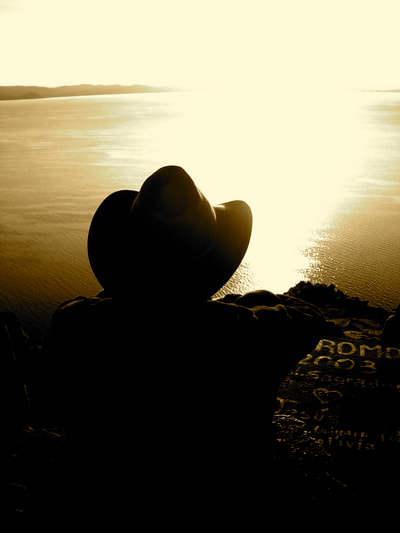
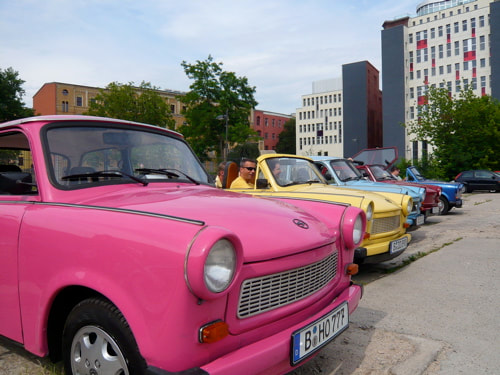
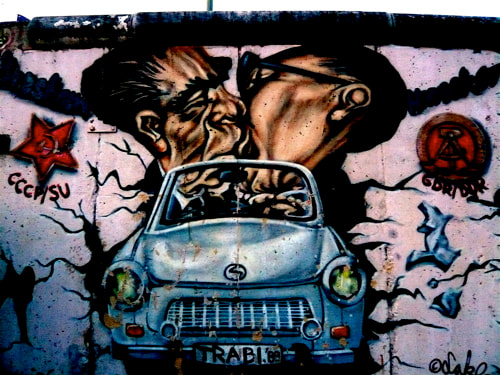
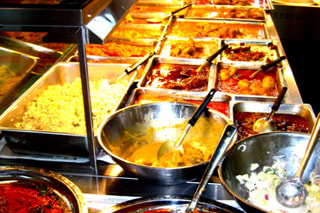
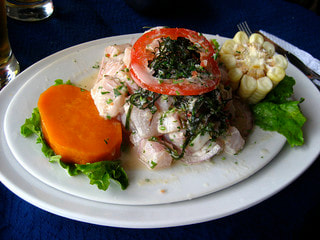
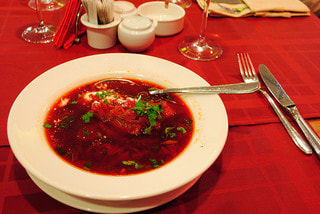
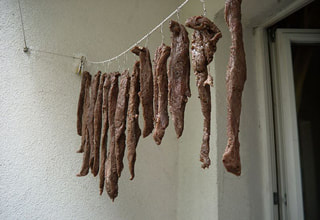
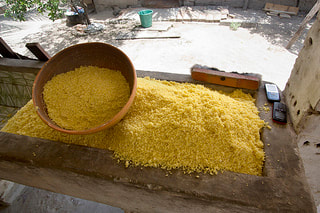
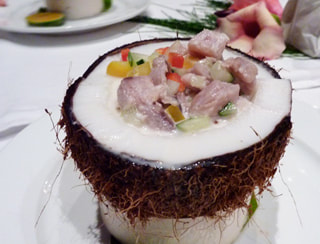
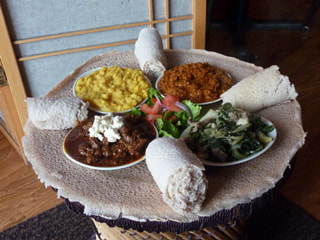
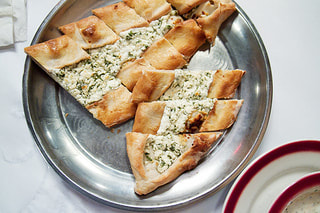
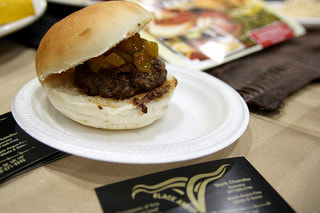
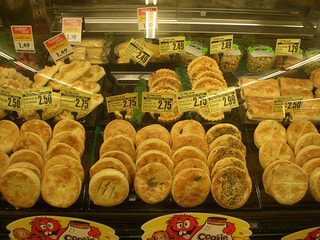
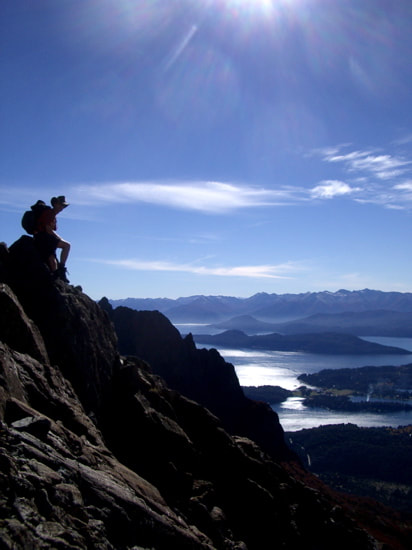
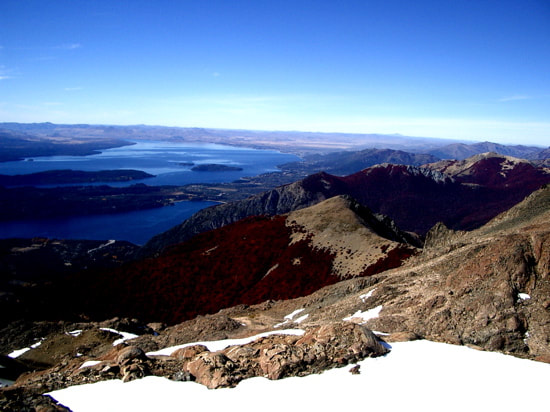
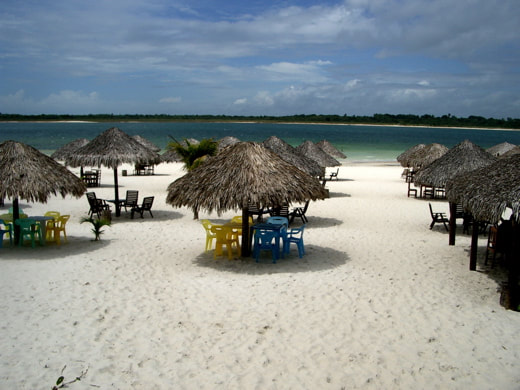
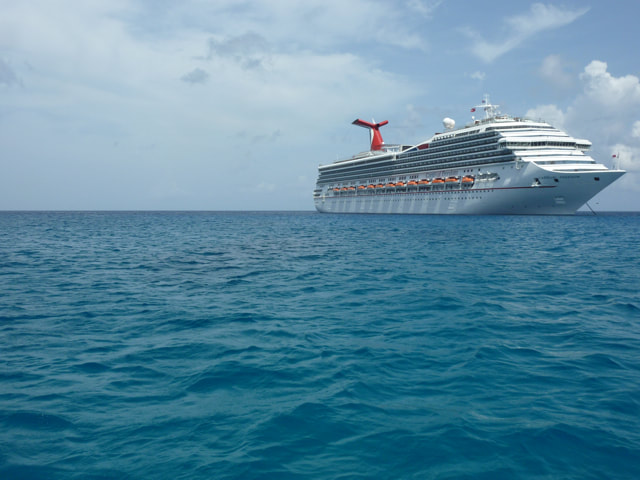
 RSS Feed
RSS Feed

